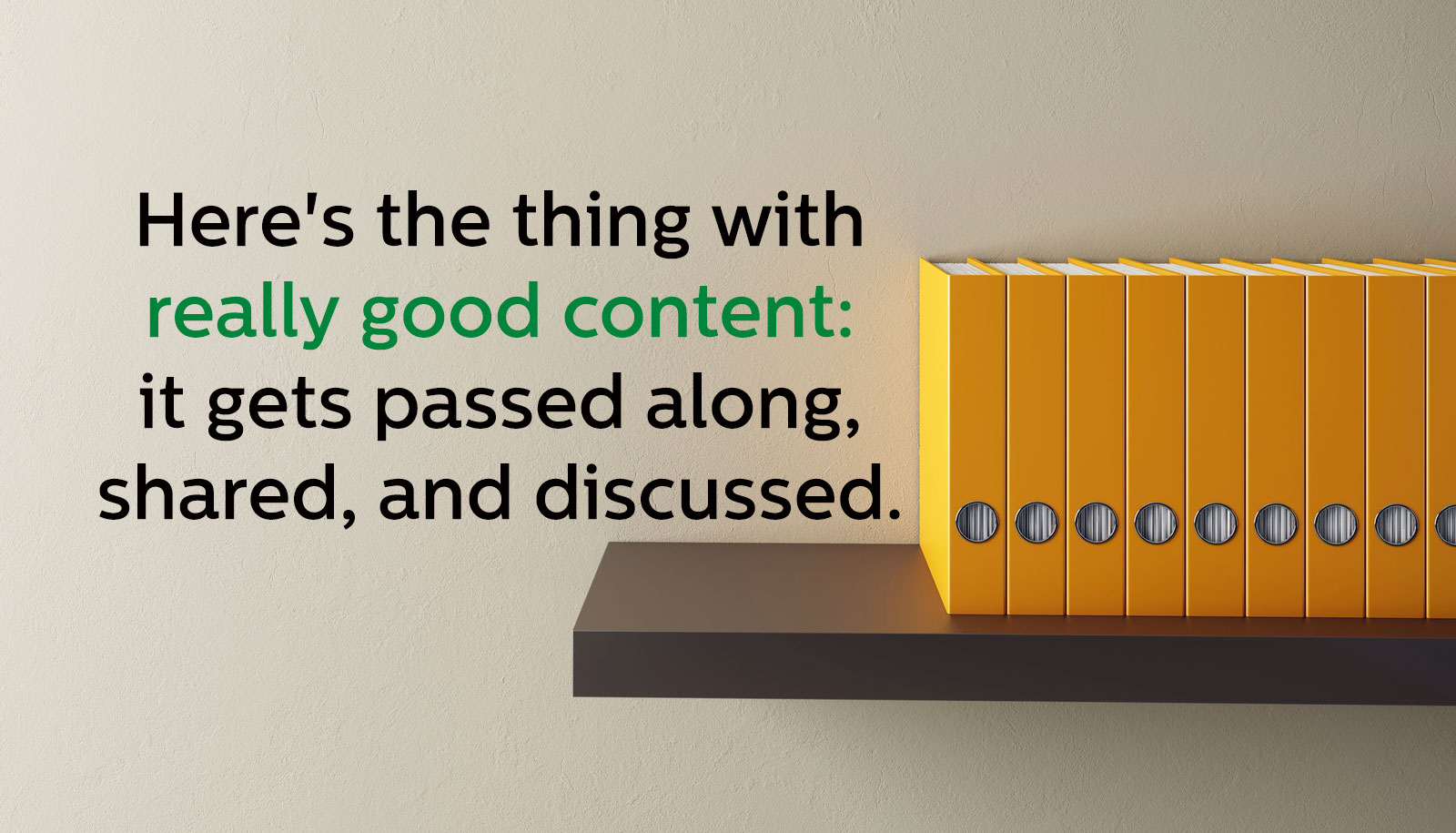You just finished outlining your buyer journeys.
Your personas are insight-driven. Each stage of the sales cycle aligns with specific buyer pain points and challenges. You feel good, knowing your content will be more meaningful, the process will be more efficient, and you’ll be generating more qualified leads.
So What’s Next?
Do You Know What Your Prospects Are Doing with Your Content?
It’s time to review existing content and tag it with the right persona and sales stage. This practice will enable you to see how much-targeted content you already have, as well as where you have holes to fill.
At Kapost, we talk a lot about best practices and what works for our clients. One of our key tenets is “repurpose, reuse, and recycle.” To dig in, let’s look at what you may be creating right now.
Mapping Content to Sales Stages
At the top of the funnel, content is focused on brand awareness and addressing buyer needs rather than product information. Marketing efforts are focused on social media, blogging, eBooks, whitepapers, and SEO measures.
The middle of the funnel represents the consideration or evaluation stage for buyers. They’ve demonstrated a level of interest and are determining what is the best fit for their needs. Webinars, email marketing, case studies, and events educate and build trust.
Assuming you’ve done well to this point, your buyers have reached the bottom of the funnel. Nice work! Let’s bring it home.
At this stage, it’s decision-making time. Marketing efforts are designed to assure buyers of their purchase intent, differentiate the brand as superior to the competition and, let’s be honest, compel them to make a purchase. CRM and sales enablement tools such as product whitepapers, demos, and sales presentations that facilitate conversations are developed for the bottom of the funnel.

A New Look at “Repurpose, Reuse, and Recycle”
Now, let’s get back to that idea of repurpose, reuse, and recycle. We typically talk about this tenet in the context of your development and use of content, creating derivative assets from a large piece of content (called a content pillar) or leveraging previously used content in a new way.
Today, I’m putting a different spin on that idea.
Effective content is created to address specific needs of buyers as they progress from awareness though consideration to decision-making. But, as you’ve no doubt experienced, decisions are not made by just one individual. There are a variety of stakeholders with a variety of interests, which—by the way—is why content mapping is so critical.
Here’s the thing with really good content: it gets passed along, shared, and discussed.
But here’s the thing with really good content: it gets passed along, shared, and discussed. This is exactly what you want to happen. And though you have little control over the secondary readership, it is one of the most crucial elements in gaining consensus on a final purchase decision. When you create great content, your prospects and clients are repurposing, reusing, and recycling your content for you.
We hear from clients quite often how a piece of content created for a buyer at the top of the funnel was instrumental for another persona at the bottom of the funnel and helped close the deal.
There you have it. High quality content that is created and mapped to specific buyer needs at each stage of their decision-making process is going take on a life of its own. And this cascade happens simply because you’re now producing highly relevant and meaningful content.

